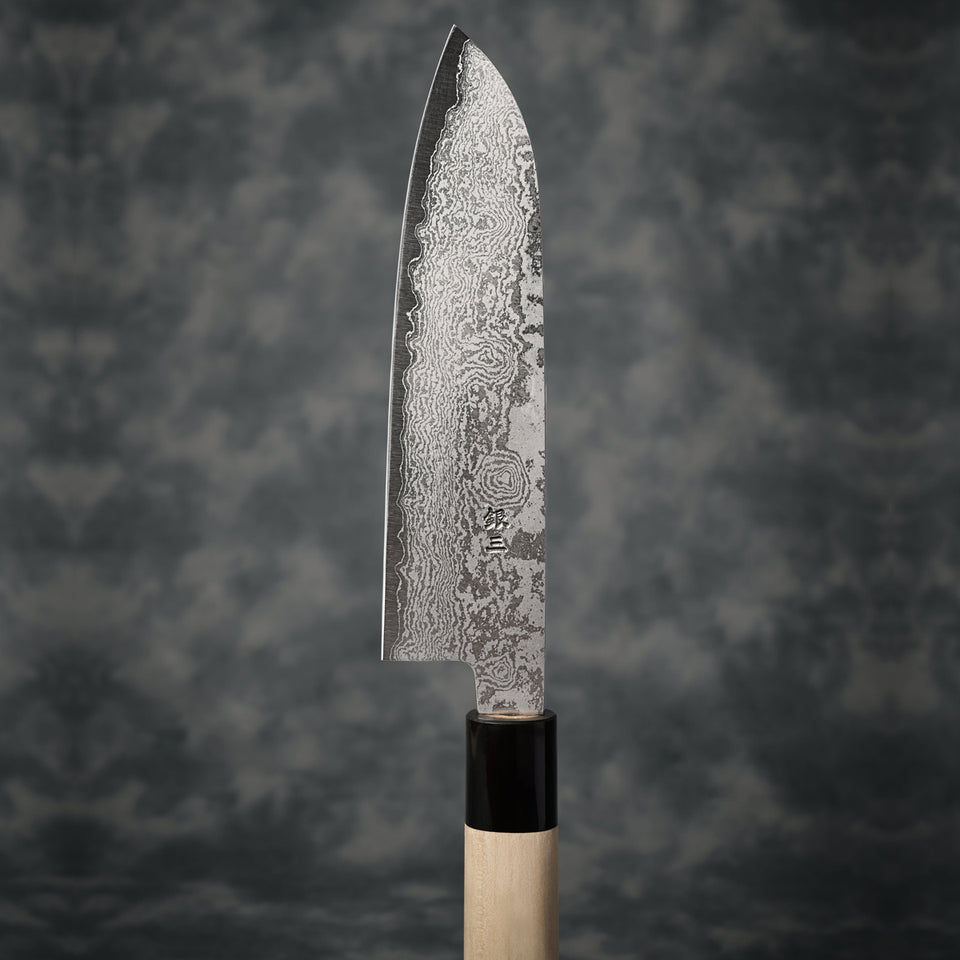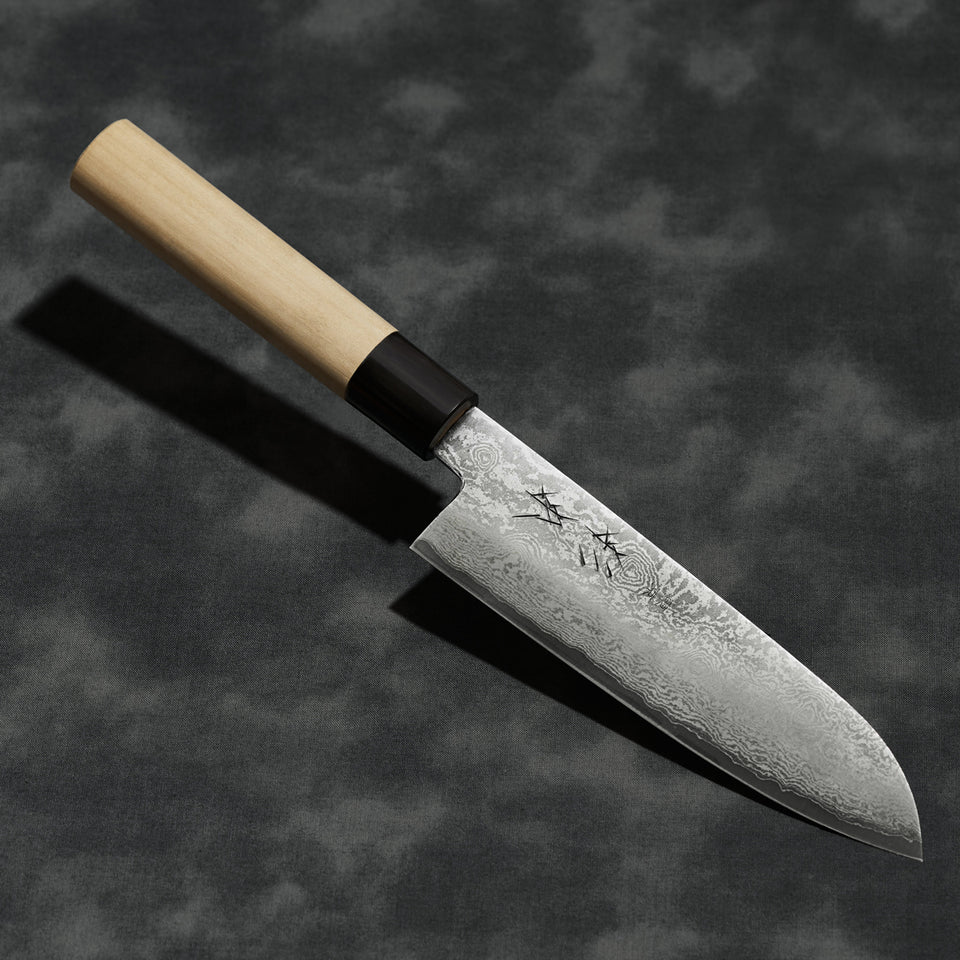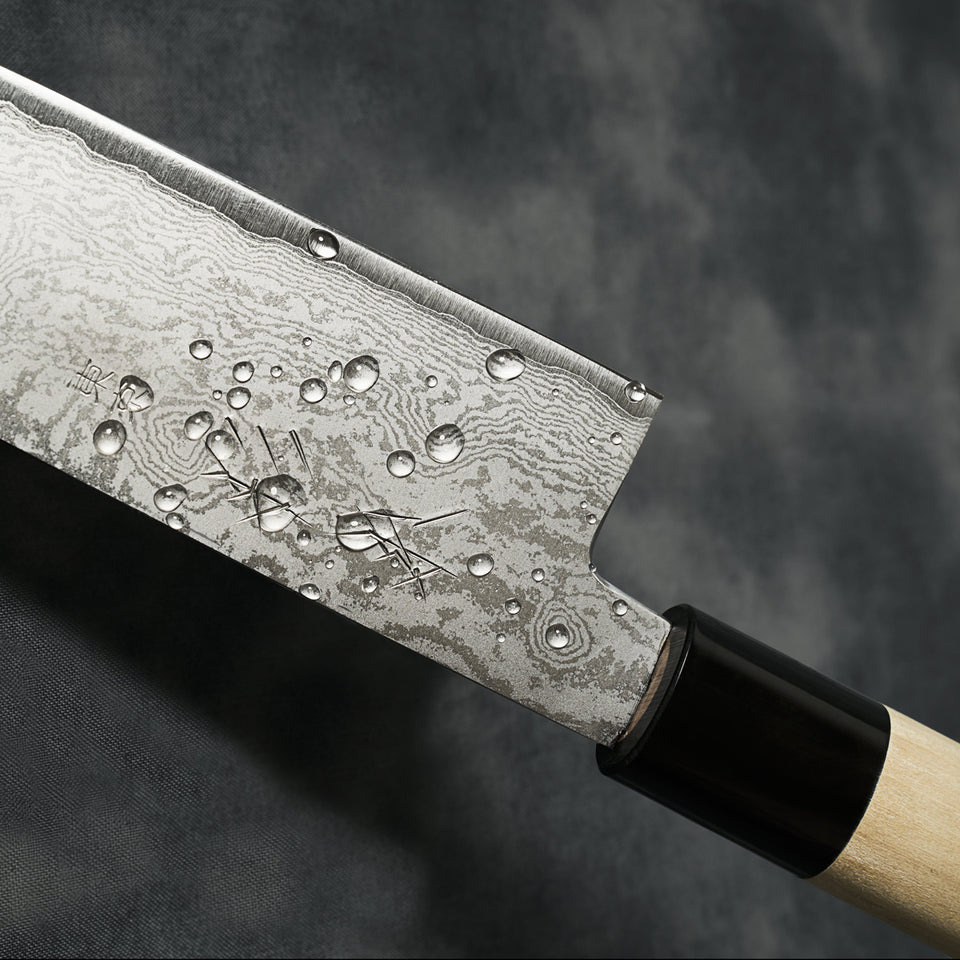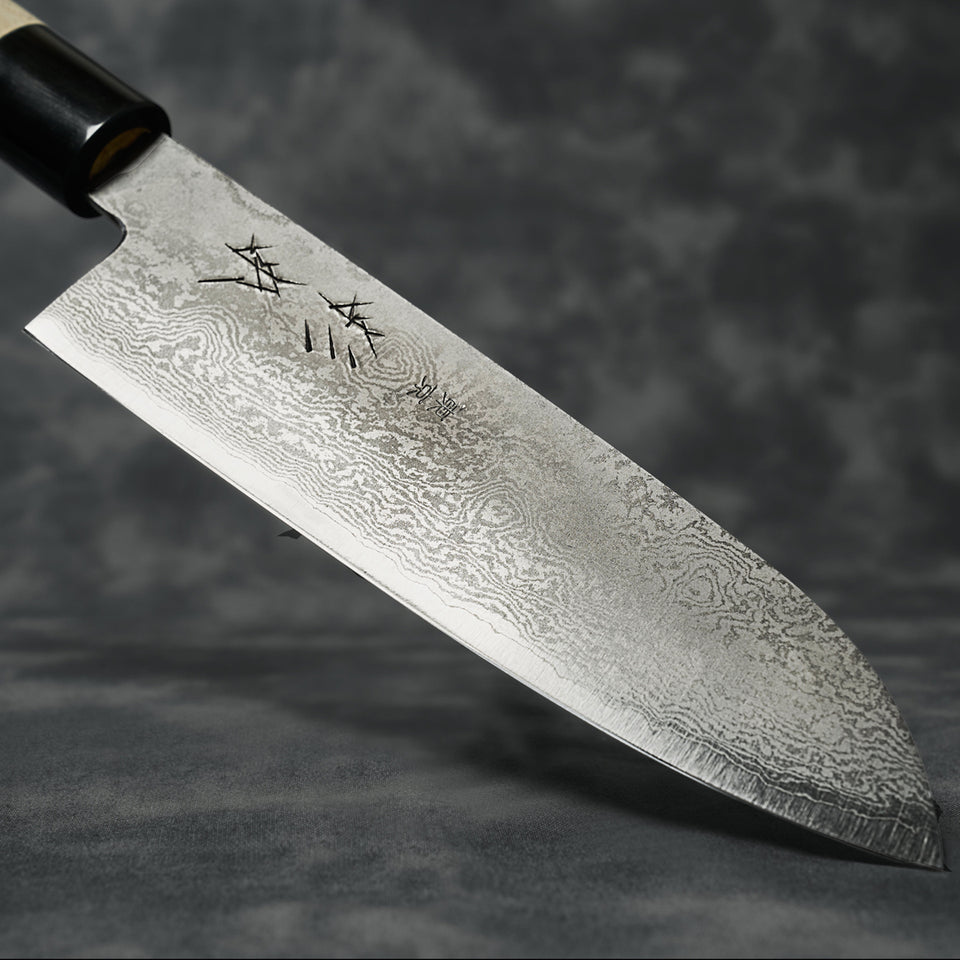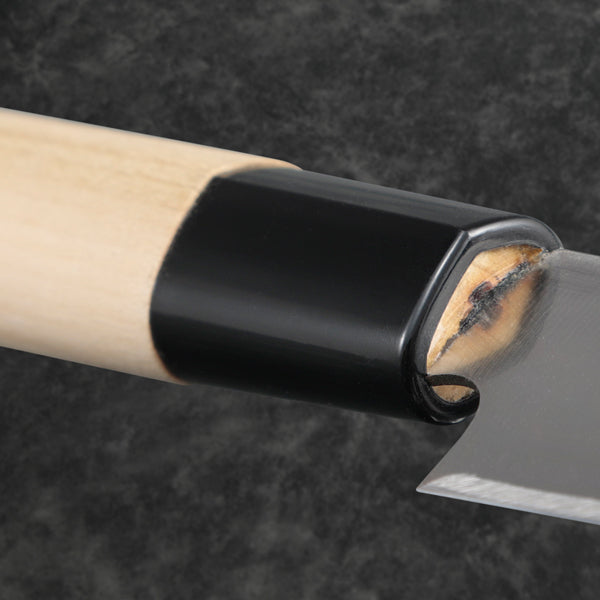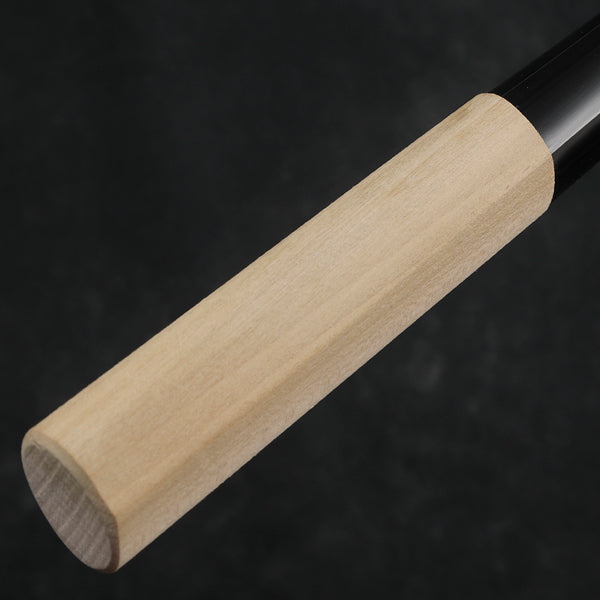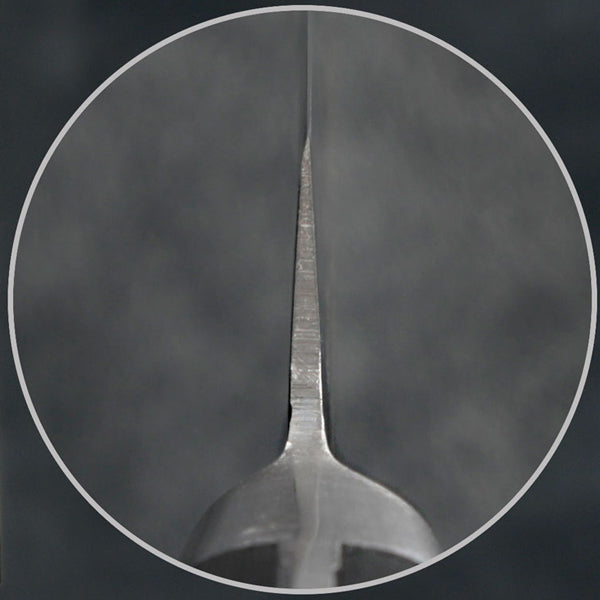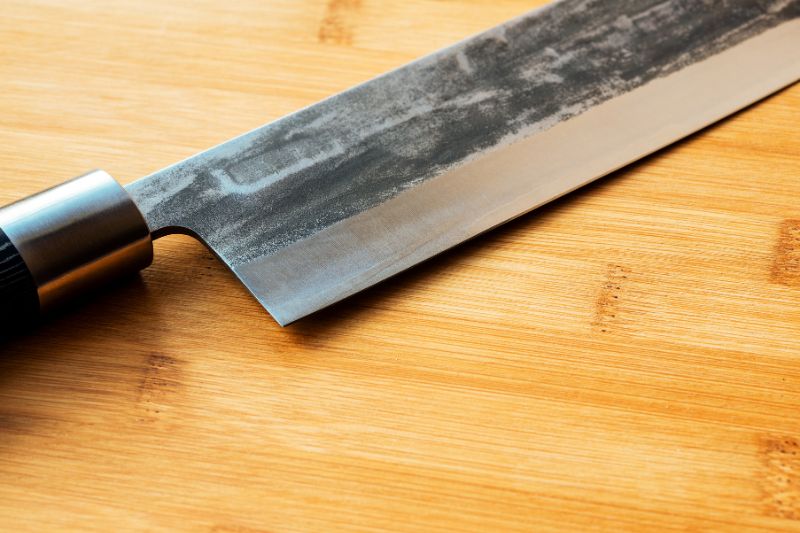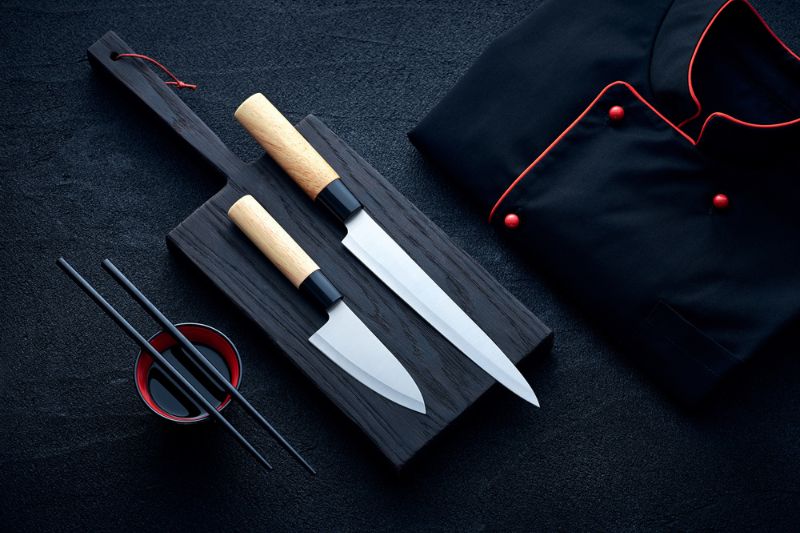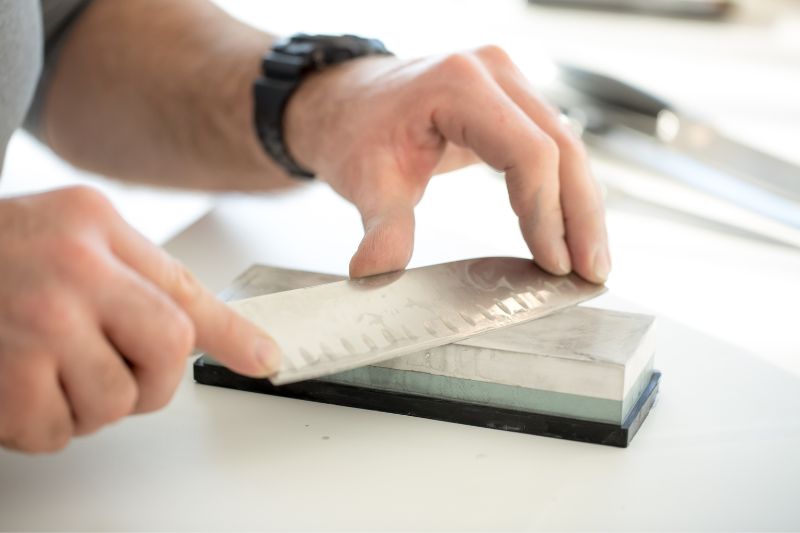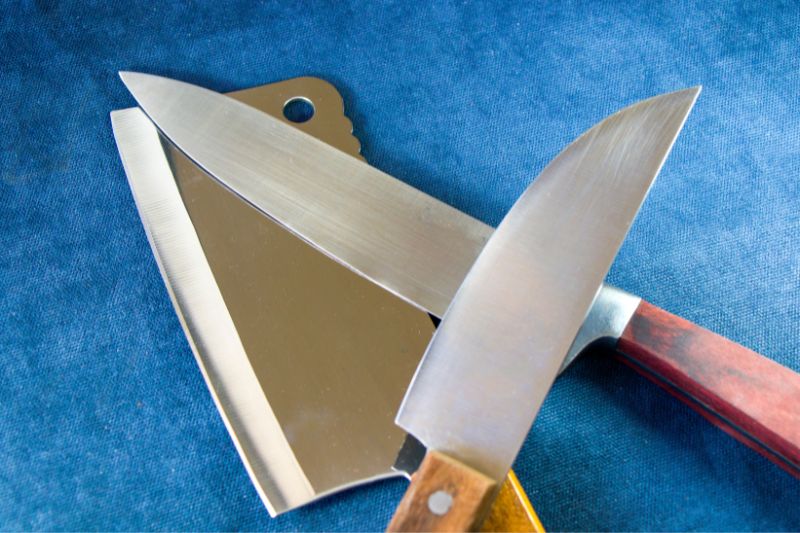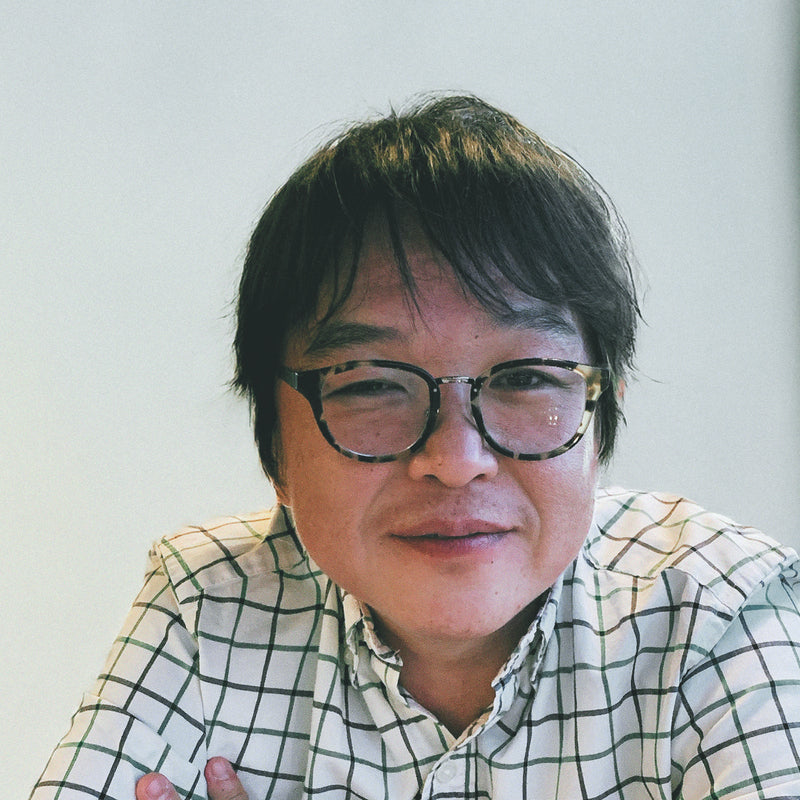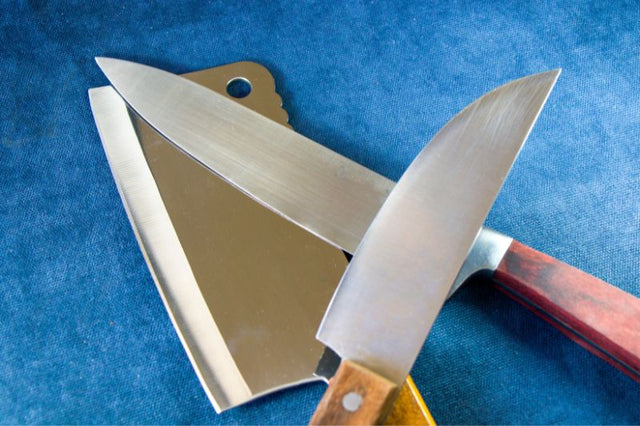Modern kitchen warriors and other knife enthusiasts have been raising the demand for Damascus Japanese knives. Who can blame them? For pure aesthetics alone, these knives already make a strong and bold statement in the kitchen—or in any situation.
Damascus Japanese Knives
Japanese knives have already established a reputation for exceptional quality. Adding the Damascus element elevates them to a whole other level of excellence.
Made with different steel grades repeatedly folded together, creating an attractive swirly pattern, a Damascus Japanese knife also exhibits all the durability and sharpness of a top-quality knife crafted by a Japanese master knife maker.
This multi-steel fusion characterized by beautifully wavy lines is Damascus steel, and there’s a good reason - several, in fact - why it has become such a hot commodity in the world of knives.

Damascus Steel
There’s almost a mystical, even mythical, element to the famed Damascus steel. It definitely existed, but the craft of Damascus blade-making had died out in the 18th century, and it wasn’t until the recent decades that master knife makers endeavored to revive it.
In the past, due to imprecise production as well as irregular distribution, the availability of various components in the base material resulted in the lack of homogeneity in the manufacture of swords, knives, and other metal products.
Ancient blacksmiths resorted to folding and forging the available steel to improve the uniformity of the material they were working with and expel its less desirable components. They ended up creating a material famed for its beauty and sharpness. As the legend goes, Damascus swords could hold a sharp edge for an incredibly long time and were much more resistant to damage.

Some historians say that Damascus steel has been around as early as the time of Alexander the Great (323 B.C. - mostly from the school of thought claiming Damascus steel and wootz steel, which was recorded as early as 500 B.C., are one and the same), but the general consensus regarding the origin of Damascus steel is that its roots can be traced back to medieval Damascus, where merchants sold metalware crafted using steel ingots imported from different places, primarily Southern India (wootz steel) and Khorosan in Persia. Eventually, the term “Damascus steel” was used to refer to both the swords made or sold in the city and those that simply bore the distinctive welded patterns associated with the former.
Sourcing materials nowadays is no longer the problem it once was. However, modern knife makers still see the appeal and value of the old Damascus steel and now deliberately use varying steel grades to replicate it.
The original Damascus steel production method is an ancient trade secret involving the perfect fusion balance of carbon and iron through a sequence of intense heat and rapid cooling. This secret, unfortunately, had been guarded a little too closely; hence, the exact process was not passed down to the next generations for posterity. Consequently, today’s industry experts have been spending some of their time in a heated debate over it.

The Damascus Name
The capital of Syria already has a fabric named for it (damask); does it have to claim a kind of steel as well? This is really quite understandable, considering that Damascus was a significant trading center in the olden times. Many products were associated with it. A number of historians see the name as one of the early forms of branding.
Damascus Steel Source
This is just one point where the telling of the story varies from source to source. Some say that true Damascus steel historically was only made in its city namesake.
Meanwhile, others say that what people referred to as Damascus steel is actually wootz steel, one of the finest steel types in the world. Originally from India, it was produced from high-carbon iron ore. Cakes of wootz steel were shipped to Damascus, where they were then used to create swords and other items.
Yet another school of thought disputes this notion, stating that wootz steel is different from Damascus steel. While Damascus steel got its pattern from welding layers of hard and soft iron, wootz steel achieves its pattern through alloying and thermal cycling. Damascus steel is a forged composite, while wootz steel is a single material.
Despite differing accounts, it can be inferred that Damascus steel was marketed in the Syrian capital, first achieving popularity there.
Modern Damascus Steel
Some purists like to get technical and point out that using the term “Damascus steel” for anything created today is inaccurate since the original production process is yet unknown, but language is dynamic. If it evolved to assign “Damascus” as a catch-all modifier for knives and other products made with pattern-welded layered steel, that’s just the nature of language.
Modern knife makers replicate the result, so it’s just splitting hairs to use a different term for it.
Commonly these days, Damascus knives have a hard steel core for optimum sharpness, and both sides are layered with different soft steel materials. These are all metallurgically joined together, meaning they were all forged and not simply plated or glued.

Steel Used in Japanese Knives
Japanese knives are in high demand in kitchens worldwide due to their unrivaled sharpness and overall excellent quality.
Traditionally, handcrafted Japanese knives are made with carbon steel layered with iron steel. This combination makes them simultaneously light yet incredibly sharp.
The Japanese already knew the blade quality elicited by the melding of hard and soft steel. The ability to create uniquely stunning patterns at the same time is merely the cherry on top, appealing to their sense of beauty and artistry. It is definitely no wonder that Damascus steel became a favorite material for fashioning exquisite and high-performance Japanese knives.

The association of Japanese knife making with Damascus steel actually dates back to the Middle Ages, courtesy of Japan’s early relationship with India. The cultural links such as the practice of Buddhism, mathematical learning, metallurgical technologies are evident to date. One of these Indian influences that are still prevalent in Japanese culture is the use of pattern-welded steel in blademaking.
As discussed above, Damascus steel has very strong associations with wootz steel, so much so that many believe that they’re essentially the same thing. Wootz steel is described as a crucible steel that has a pattern of bands made through the forging of high-carbon steel and lower-carbon steel. This pioneering steel alloy reached Japan in the 8th century CE and made a crucial impact on traditional Japanese sword making.
Japan’s iron was purported to be of poor quality and the steel it produced needed to be folded to get rid of impurities. Traditional Japanese swords were made with tamahagane steel, which, much like wootz or Damascus, was a combination of high-carbon and lower-carbon steel layers. These layers, of course, once folded, also produced similar wavy patterns.
The Japanese have an ancient art of paper-marbling called suminagashi. When the same patterned appearance was created in steel, the term was also used for it. For this reason, suminagashi has become the Japanese equivalent of Damascus steel, which has become a loose umbrella term for any steel with a wavy pattern.
Japanese Damascus Process
Since the ancient process of Damascus steel production wasn’t officially recorded, there’s no single specific way to achieve the end product now. This allows master Japanese knife makers to tap into their imagination and creative skills to craft their version of Damascus steel.
Admittedly, many of them start with high-quality pre-layered steel. It’s a smart route to take since, even with the layering out of the way, they still have their work cut out for them.
It’s up to each craftsman to play up the aesthetic while keeping the other attributes intact. For instance, one master Japanese bladesmith adds acid etching to the process to make the patterns really pop. Dipping the blade in acid results in a stunning deep gray-and-white contrast between the steel itself and the nickel used in the layering.
Then you have the “from scratch” type of knife makers. They like being hands-on from start to finish and seem to revel in the intensive labor. For instance, one master blacksmith alternates seven pieces of steel from two different sources, forges, and stretches them into a long bar that he then folds into a Z-shape. That equates to 21 layers. He repeats the entire process two more times before he takes the three sets of folded bars, stacks them up, and finally welds them into a 63-layer Damascus blade.
These are just two examples of processes employed by master Japanese blacksmiths to create gorgeous Damascus knives.
Attributes of Damascus Japanese Knives
Japanese knives are generally known for their sharpness, hardness, and thinness. Damascus Japanese knives boast similar points of virtue and more.
- Edge retention - Besides exceptional sharpness, Japanese Damascus knives also hold their edges for a really long time. Damascus steel has a super fine grain that allows honing to an extremely sharp edge.
- Rust resistance - Many Damascus Japanese knives have chromium-molybdenum steel (a.k.a. Chrome moly), a rust-resistant material. This component helps prevent the knives from rusting quickly. Please note that it’s not entirely immune to rust, so vigilance must still be observed to prevent any corrosion from happening.
- Minimal drag - Damascus steel has a textured surface that minimizes drag while slicing. The reduced friction also lessens the likelihood of ingredients sticking to the knife. In effect, this means less effort and better precision for the user.
- Easier maintenance - Since it keeps its edge longer, honing doesn’t have to be as frequent. When cared for properly, corrosion can easily be prevented. Maintenance involves nothing more than keeping it clean using warm, soapy water and soft sponges, nothing abrasive, and storing it properly either in a knife block or on a magnetic strip, not in a drawer with other utensils. Oiling is also recommended at intervals depending on frequency of use.
- Unique look - Much like fingerprints or snowflakes, no two Damascus knives are exactly the same. If you have one, you can be certain it’s the only one in the world. It has no duplicate or replica.
Value of Damascus Japanese Knives
Admittedly, the cost of a Damascus Japanese knife can be steeper than many other knives. Still, the price simply reflects its actual value. The materials, the machinery, the work, the craftsmanship - these all need to be accounted for.
The processes described above attest to the labor-intensive artistry that goes into the production. To give you a better idea of why an eight-inch Damascus Japanese chef’s knife can retail for hundreds of dollars, here are the usual steps involved in its manufacture.
As previously mentioned, it starts with layering different kinds of steel. From the get-go, it’s already more work for the bladesmith, who also needs to determine beforehand what kind of pattern he wants.
Bolder patterns require fewer layers, while extremely intricate ones could mean thousands of layers. Take note that multiple layers also allow more opportunities to mess up. An ill-timed or ill-aimed blow with the hammer could completely ruin the desired pattern.
After the layering comes the forging. Only experts know when the steel is already forge-welded and ready to be drawn out of the intense heat. It’s incredibly tricky to forge layers of steel without the working pattern getting distorted. If an attempt to forge the steel is made at the wrong temperature, it could crack, which means weeks of work down the drain.
It may seem implausible that a single Damascus knife could consist of thousands of layers of steel, but there are ardent knife makers who have taken upon themselves to use even up to a million layers. Many bladesmiths agree that 500 layers should suffice for a very fine pattern, but it’s common for creative characters to push the envelope.
The ones who create Damascus steel with an insane number of layers may seem to simply be indulging in a pointless extreme exercise, but at least they thoughtfully document their feat and typically share it online for our entertainment and amazement.
Going back to the main point, Damascus knives with thousands of steel layers, although completely functional, are more of an art piece and would fetch a price tag worthy of a masterpiece. Understandably, the greater the quantity of layers, the more rigorous the labor and the higher the price point.
This is true for the more practical knives as well. You have to take into account that a Damascus Japanese knife with hundreds of layers can take multiple weeks to create. The time, the effort, the machinery, and the mastery all contribute to the intrinsically high value of such a knife.
Fake Damascus Japanese Knives
There’s a caveat for buyers, of course. Dishonest and unscrupulous people will always find a way to deceive consumers with fake products. It would be unfortunate if you set out to invest in a Damascus Japanese knife only to end up with an imitation that had its pattern simply printed on it. This means that you actually got a knife made with monosteel (instead of different layers of steel) with a Damascus-like pattern laser-etched into the surface.
It can be challenging for a layperson, but there are ways to determine the authenticity of an alleged Damascus knife. More fitting for a knife already in your possession is the acid test. Pick a small section of the blade to polish until the pattern disappears. After it’s no longer visible, dip it in acid and see if it reappears. A fake will just show random marks.
If you’re shopping in person and can inspect a knife you intend to buy, you can simply check its pattern for consistency. The folds and swirls should be uniform throughout the blade, from the cutting edge to the spine to the tang.
Look closely at the pattern and try to figure out if it looks printed, engraved, or even merely glued. As previously mentioned, there are machine-generated patterns that resemble those of Damascus steel. Still, they were only achieved with laser or waterjet, not layering and forging. Further scrutiny will also reveal if there are weld lines or seams. These are also possible indicators of a lack of authenticity. Real Damascus steel manifests a seamless integration of all the steel layers used to make it.
Do not, however, get overzealous about busting fake Damascus Japanese knives. There are some wrong ideas out there about what’s real and what’s not. For instance, you might be advised that a genuine Damascus knife would have the pattern visible on the entire blade, but this is not true, considering that polishing can rub out the surface pattern. The pattern has to be consistent, not necessarily visible, in all the blade parts.
Some people might also tell you that acid treatment would disqualify a knife from being authentic Damascus. However, acidification is a very common step in Damascus knife production these days because it does a beautiful job of setting off the contrast created by the pattern. To clarify, acid is used as a sort of wash to highlight the pattern created by the layering, folding, and forging of different pieces of steel. It is not used to etch the pattern itself into the blade.
Final Thoughts
Damascus steel is the stuff of legends. Its compelling history, elegant pattern, and fantastic performance create a kind of mystique that draws the imagination of culinary professionals and knife aficionados all over the world. It perfectly coincides with traditional Japanese knife-making customs. The fine qualities of Damascus steel compounds the very nature of Japanese knives, which are a testament to their smiths’ precision and labor of love.
Damascus Japanese knives pay homage to the Damascus steel of yore while also leveraging the technology we have today. Owning such a knife is a combined experience of romance, history, art, and science. It’s not only about the thoroughly enjoyable visual and tactile experience; it’s also about the allure of the tales and mystery surrounding a once-lost ancient craft.
Get Free Bonus Books
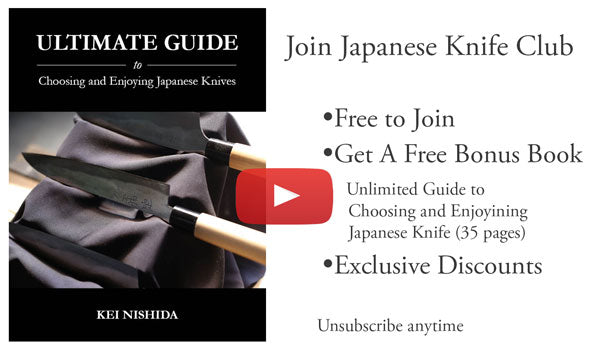
Sign up for free to the Japanese Knife Club to get advice and exclusive articles about how to choose Japanese Knives, and tips and tricks for using Japanese knives.
About the author
Kei Nishida
Author, CEO Dream of Japan
Certification: PMP, BS in Computer Science
Education: Western Washington University
Kei Nishida is a passionate advocate of Japanese craftsmanship, a writer, and the founder and CEO of Japanese Knife Co., Japanese Green Tea Co., and Japanese Coffee Co., all part of Dream of Japan.
His journey began with a mission to introduce the world to the exquisite flavors of Japanese green tea. Through Japanese Green Tea Co., he pioneered the import of premium tea grown in nutrient-rich sugarcane soil, earning multiple Global Tea Champion awards. He then expanded into the world of coffee, launching Japanese Coffee Co., the first company to bring Sumiyaki charcoal-roasted coffee to a global audience.
With a deep appreciation for Japanese artistry and tradition, Kei turned his attention to one of Japan’s most revered crafts: bladesmithing. Through Japanese Knife Co., he made handcrafted katana-style knives, created by a renowned katana maker, available outside Japan for the first time. These exceptional knives embody centuries of samurai sword-making expertise, blending tradition with modern functionality for chefs and collectors alike.
Kei’s journey continues as he uncovers and shares Japan’s hidden treasures—one sip, one blade, and one legacy at a time.

